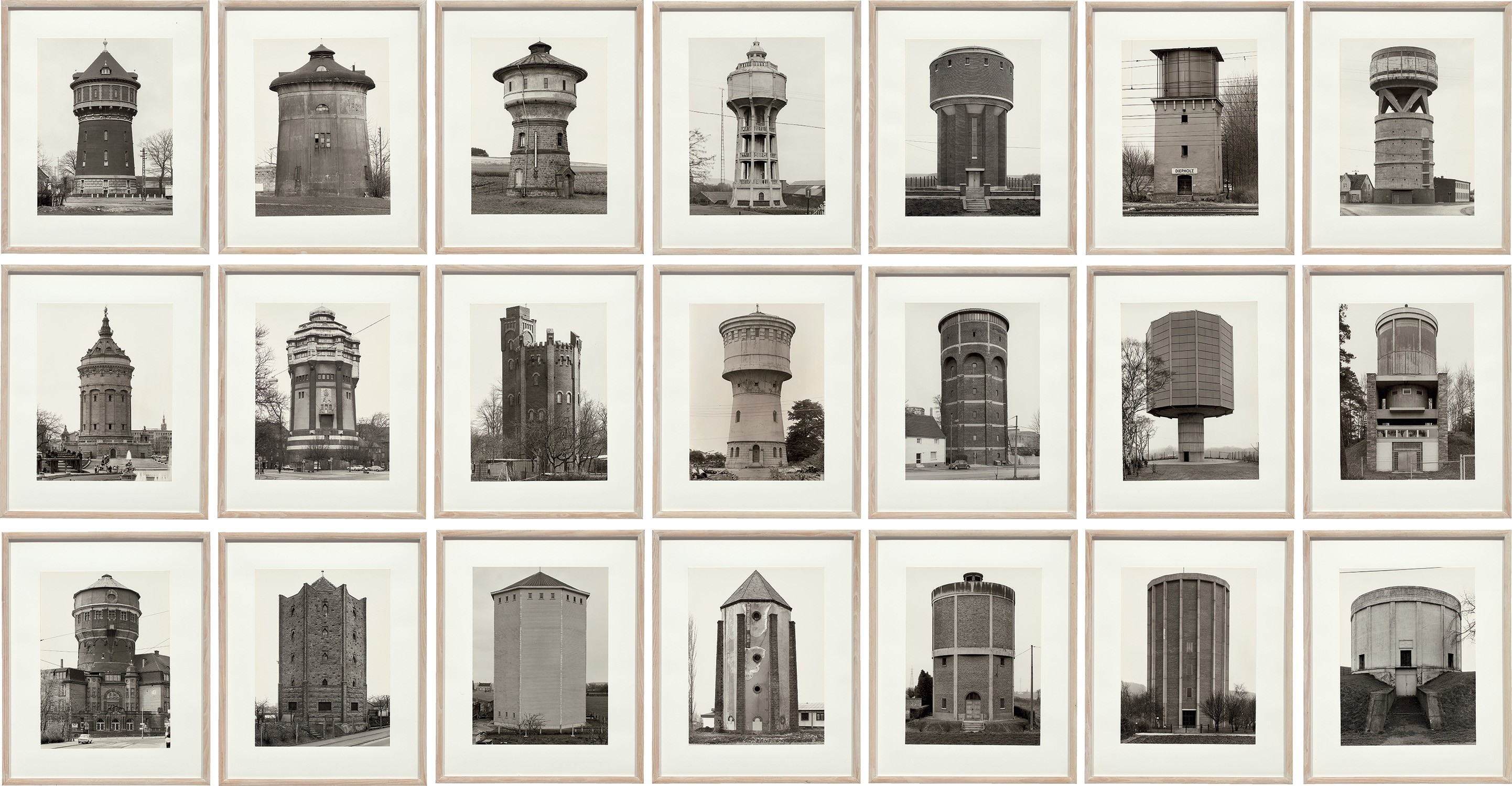


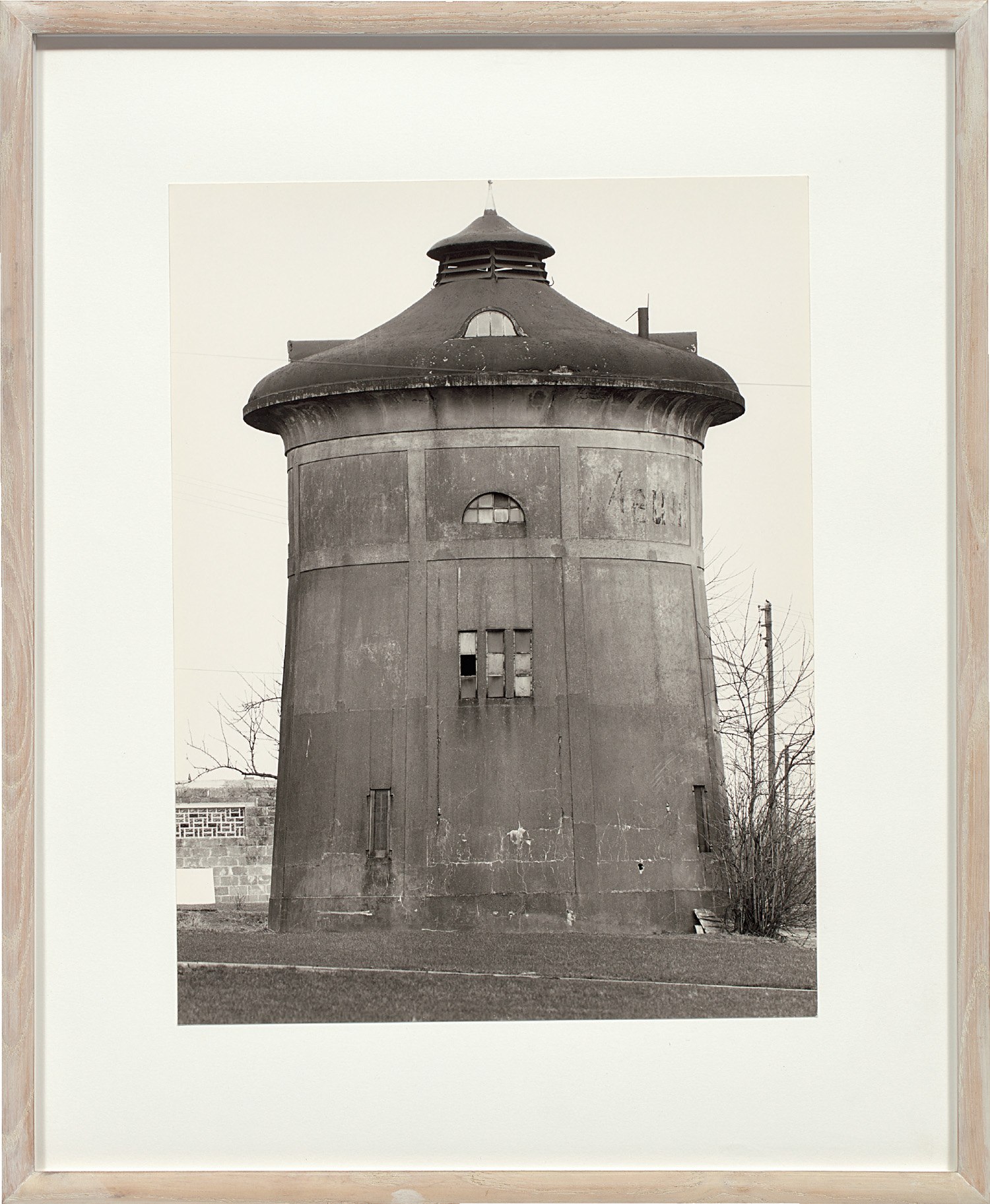
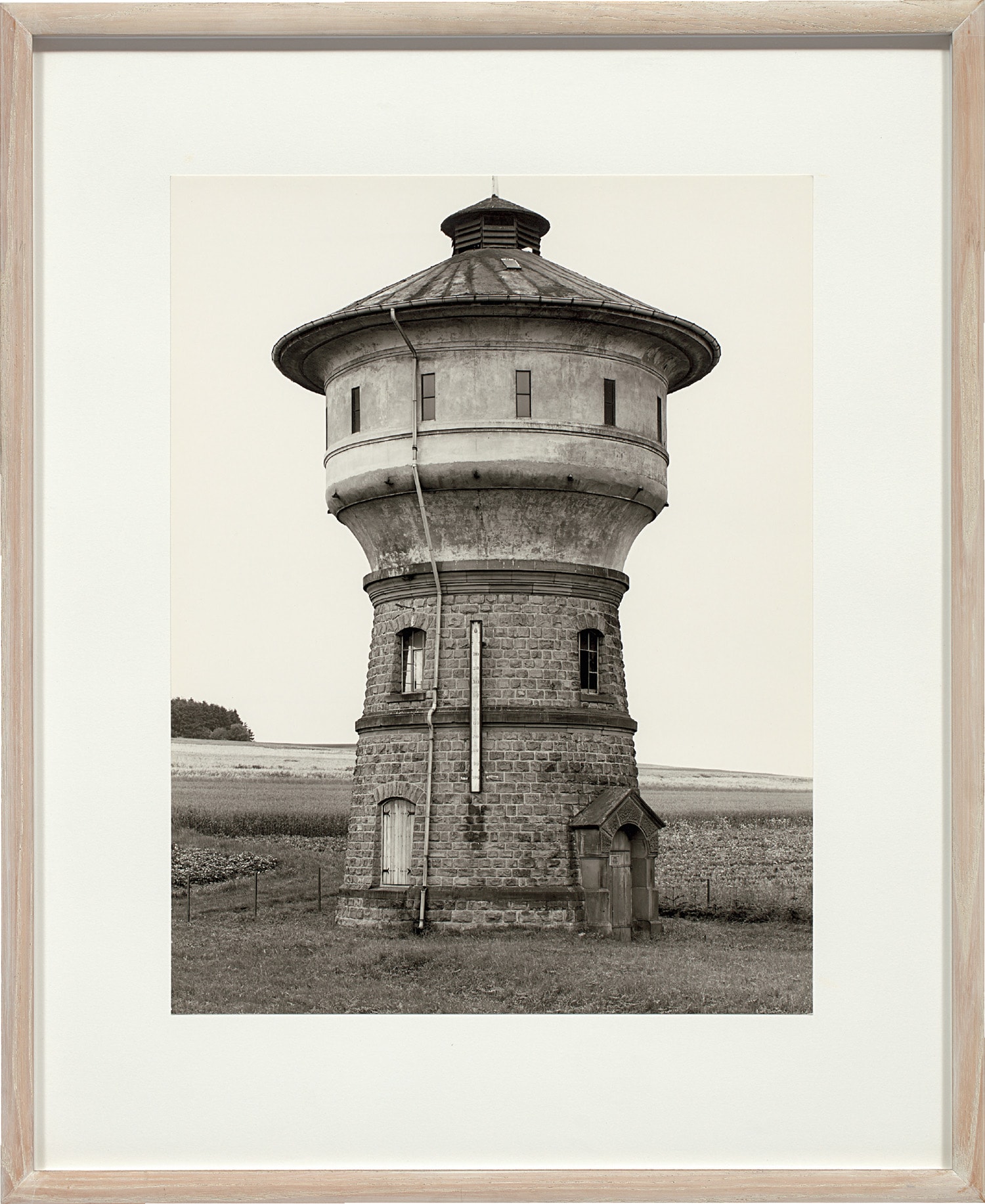
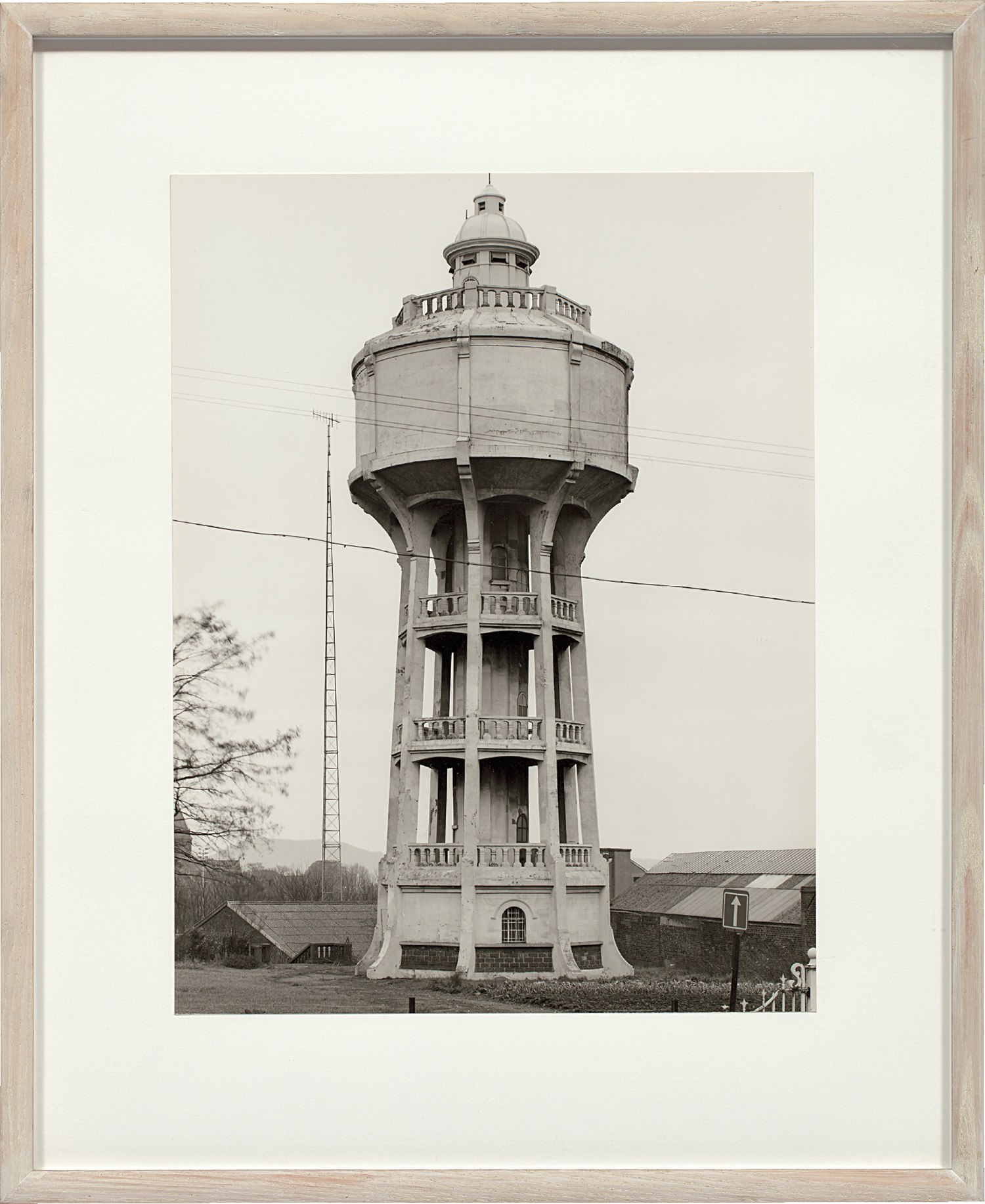
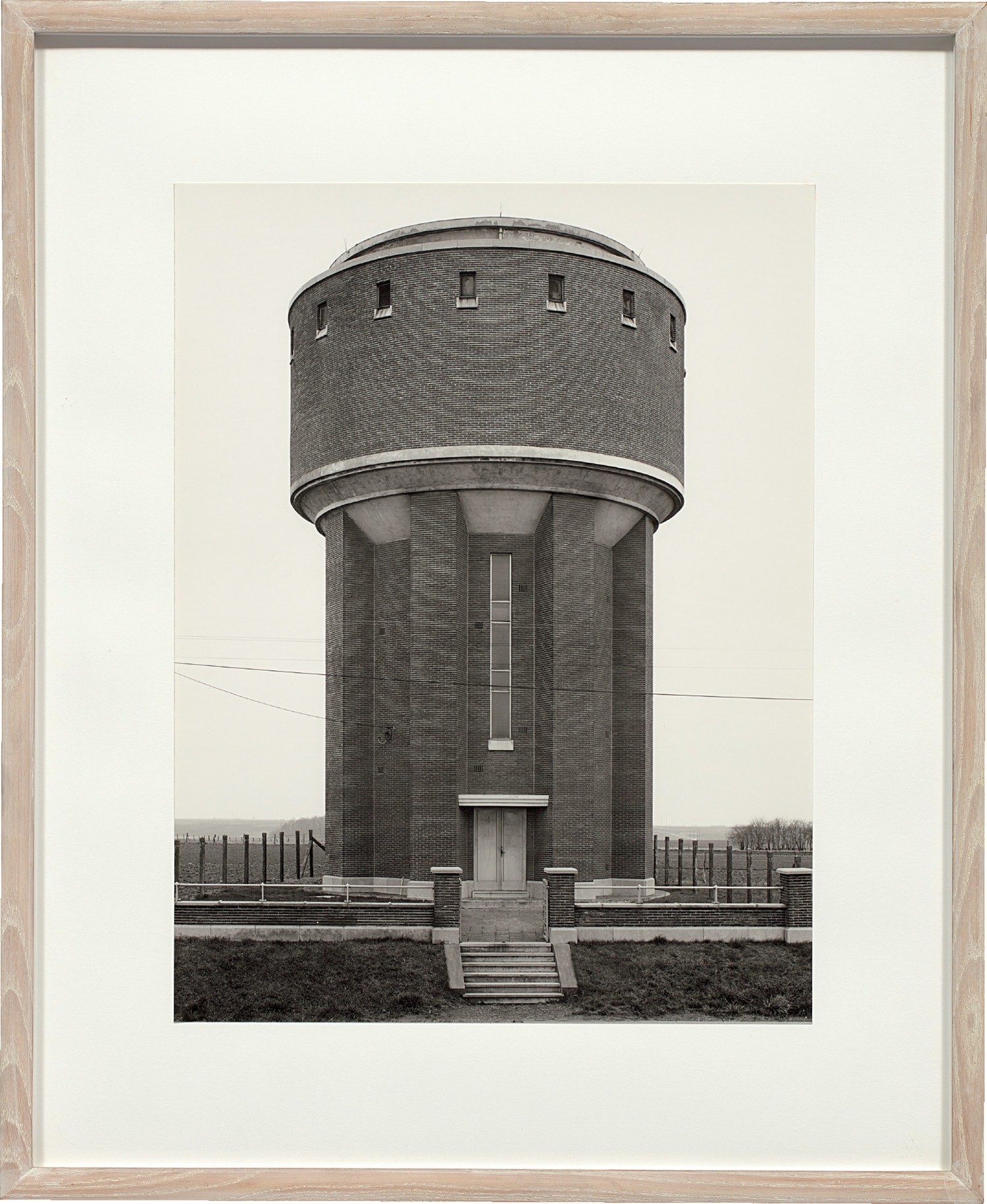
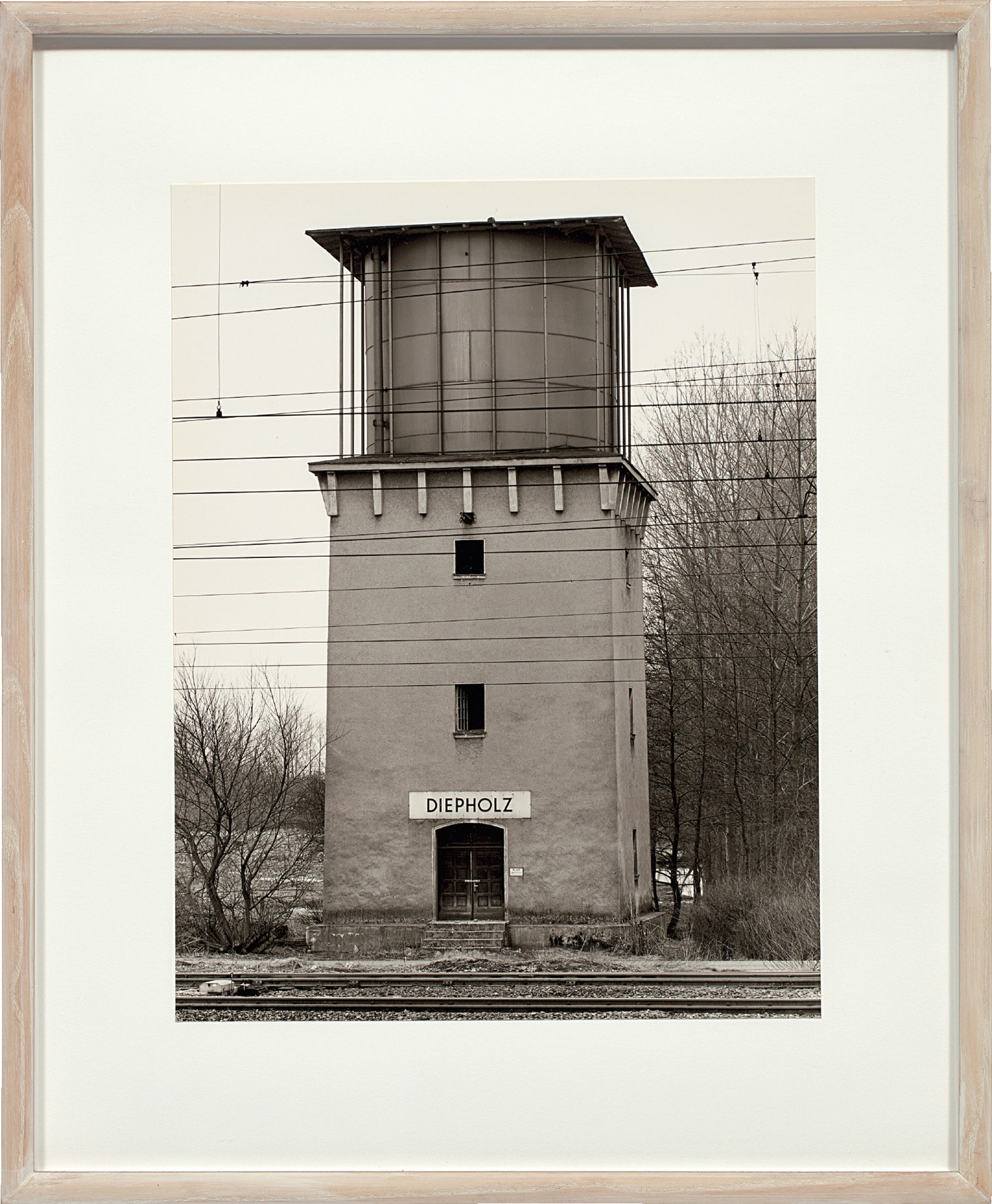
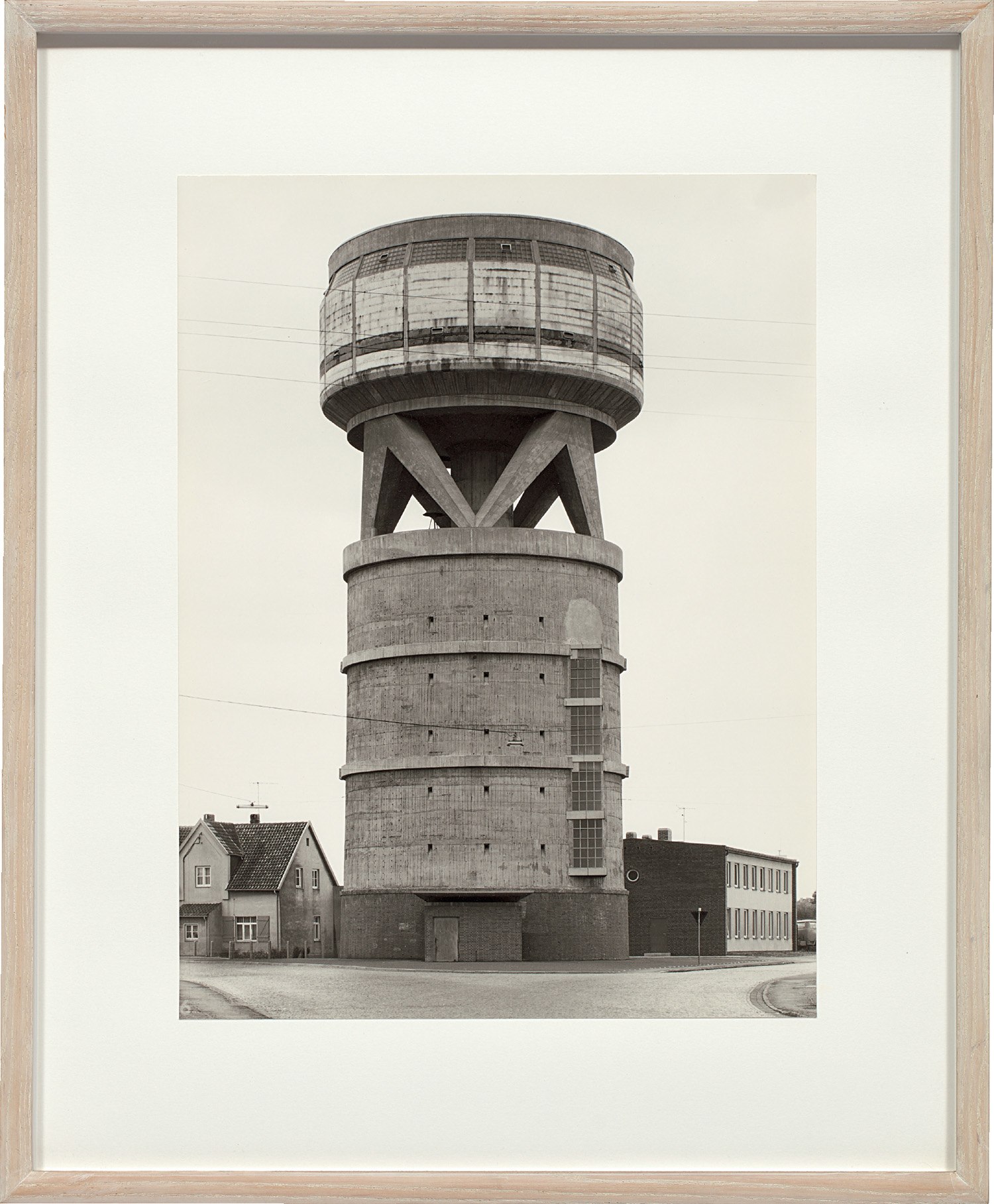

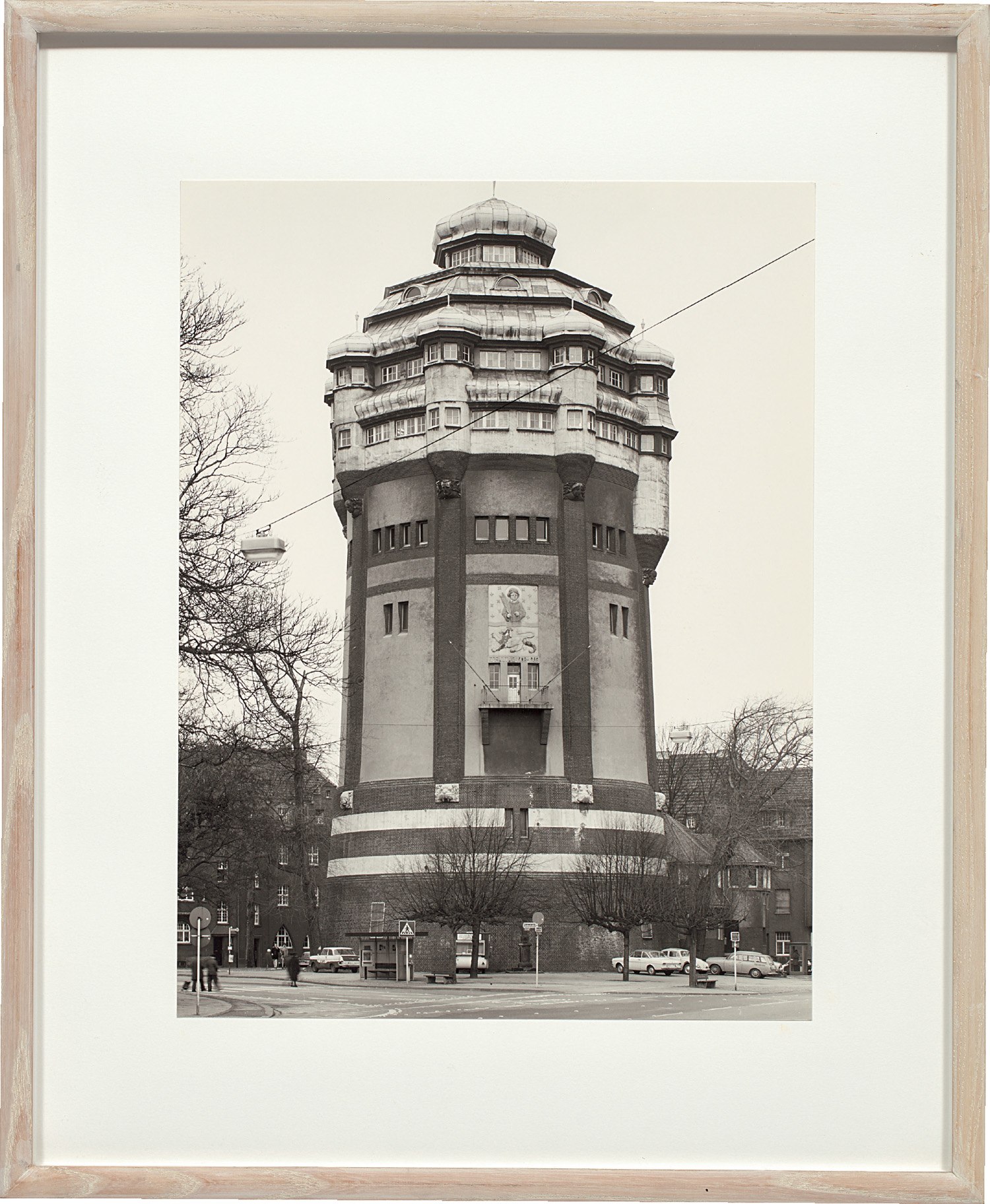


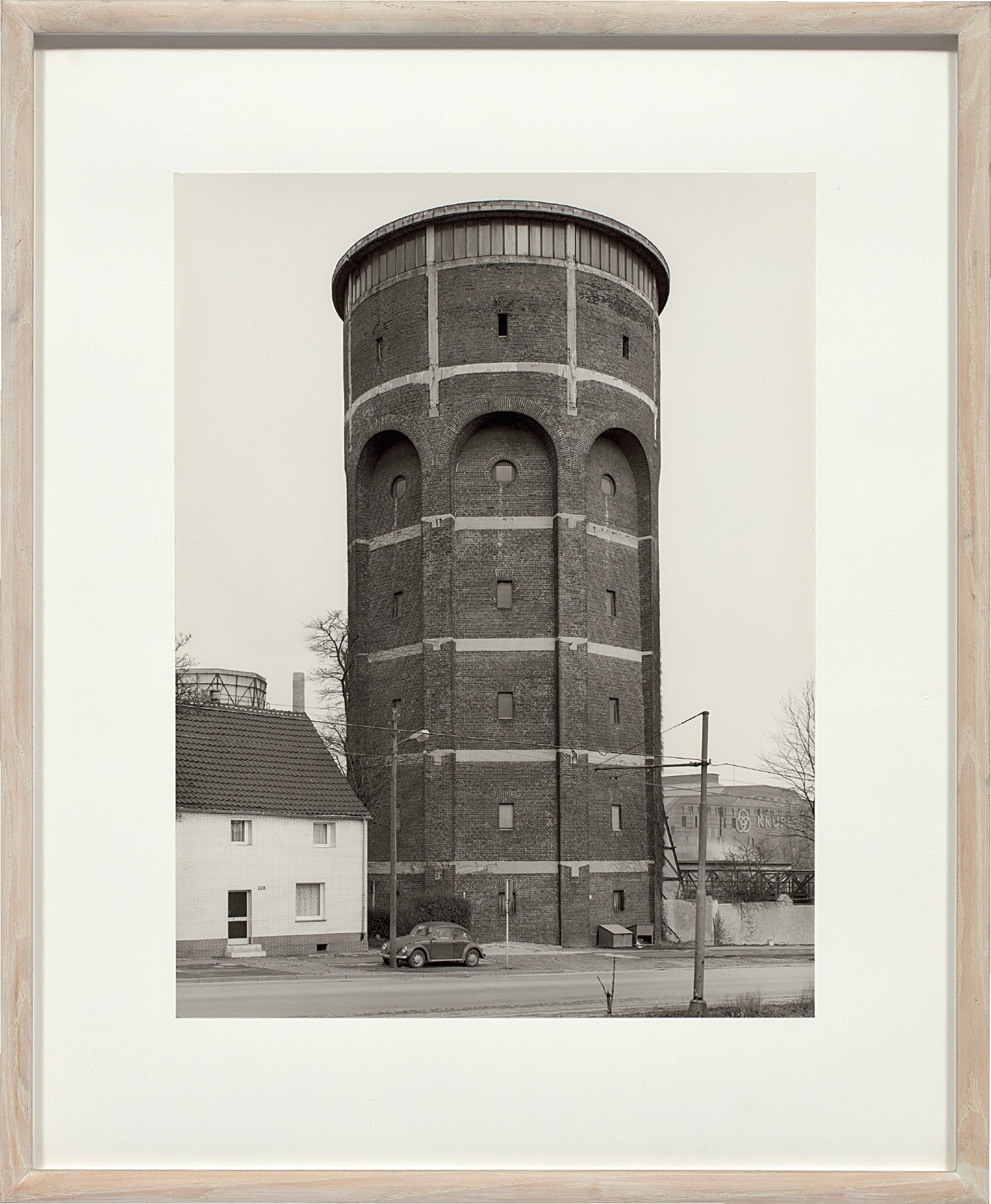
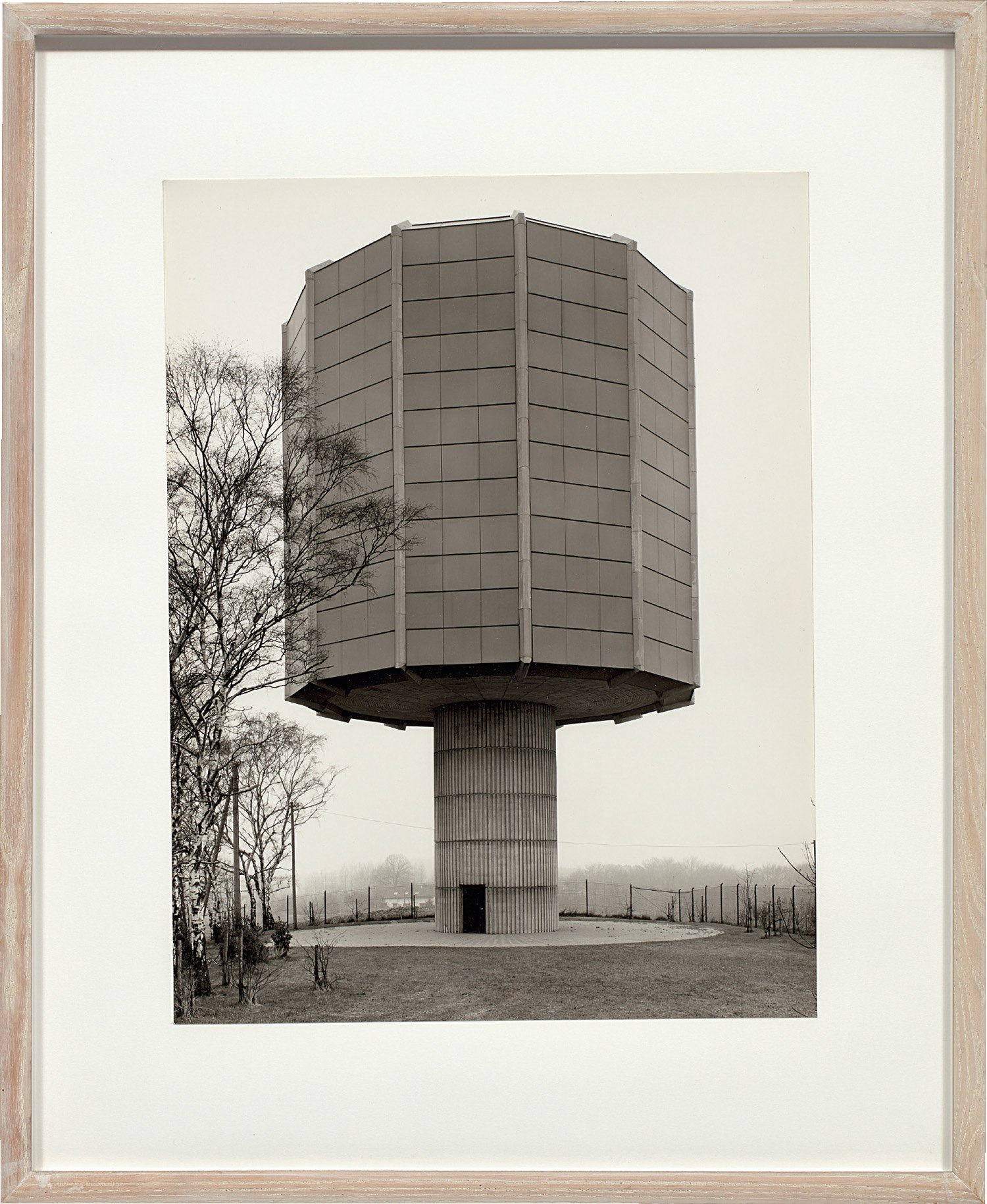
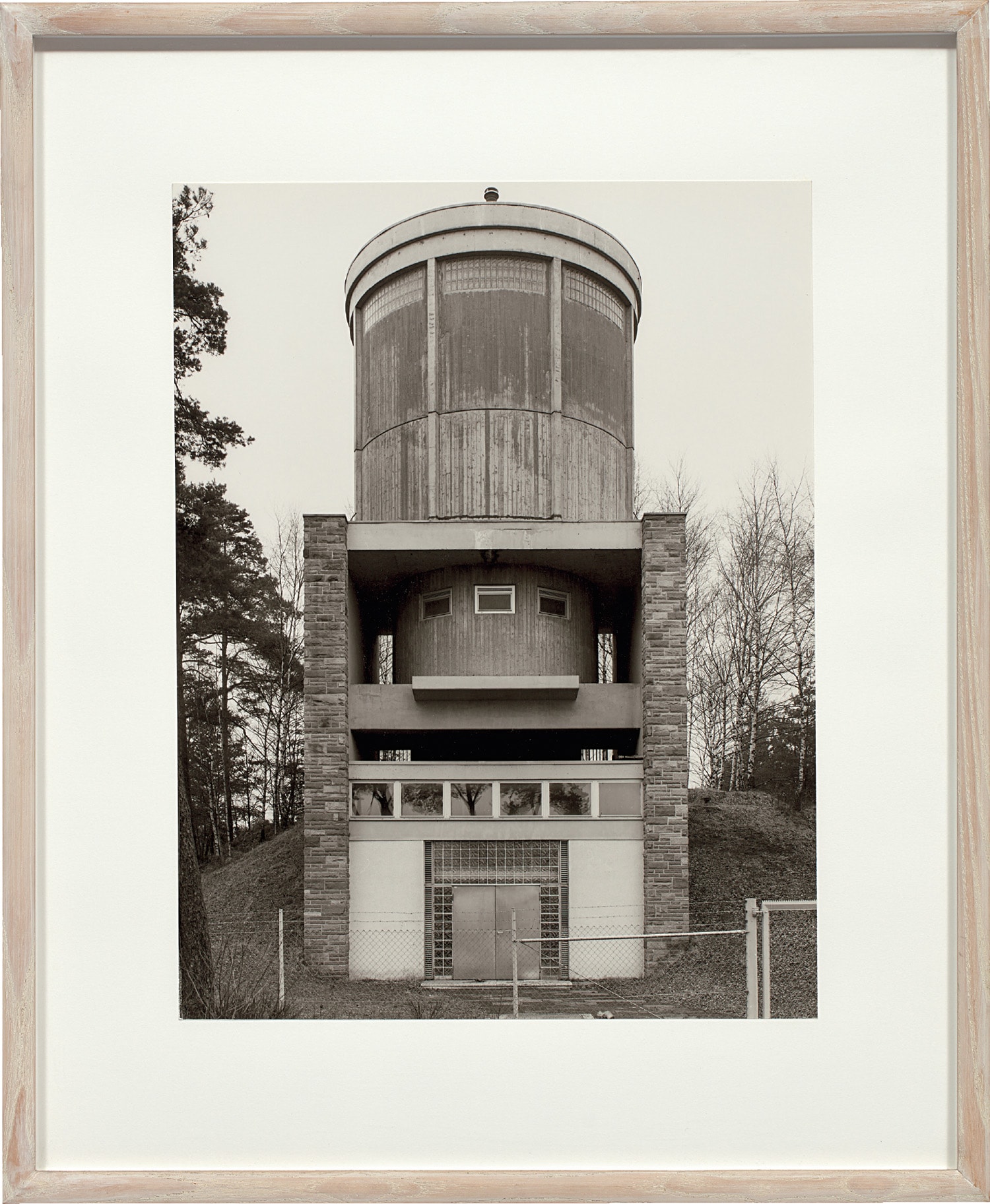
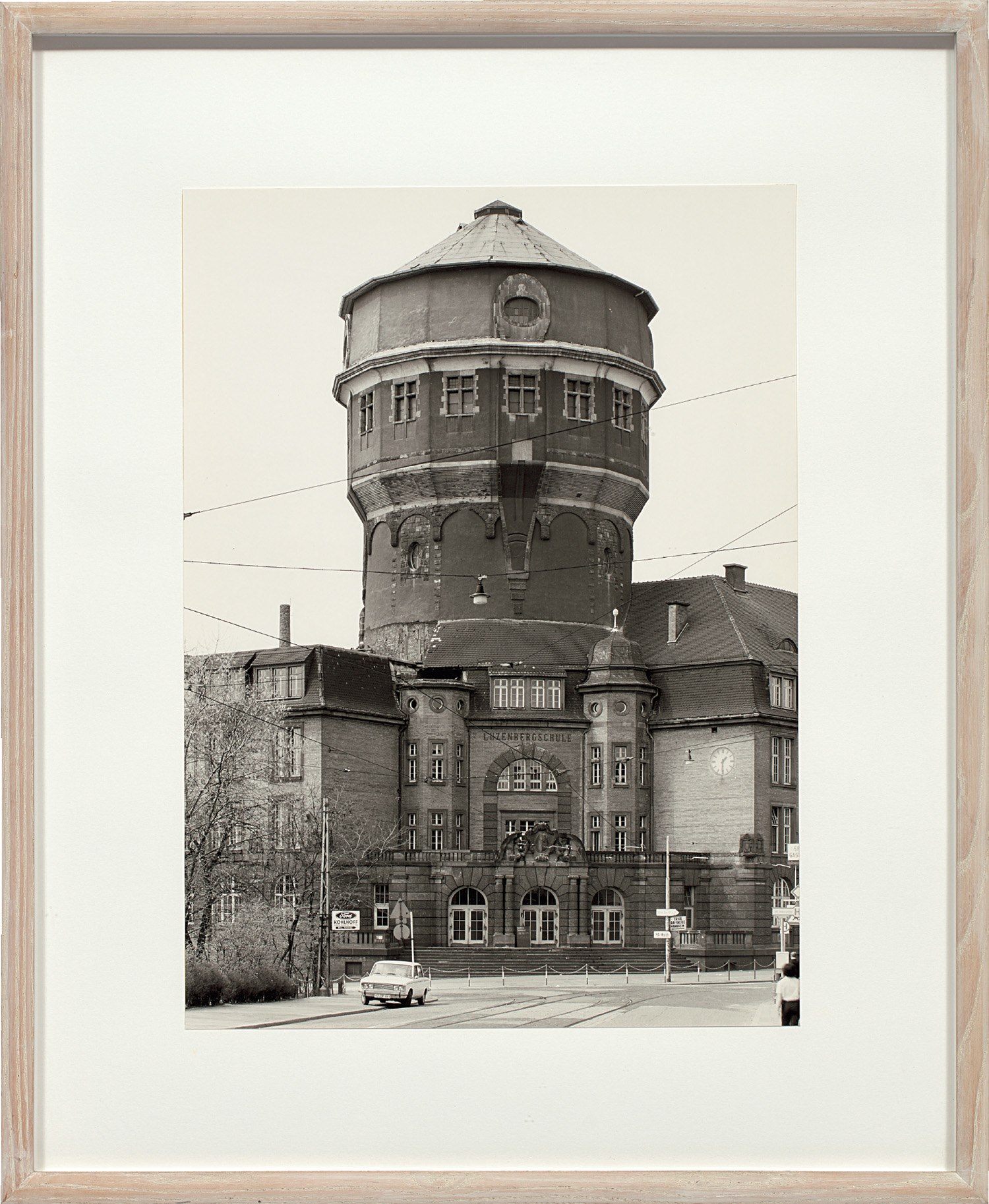
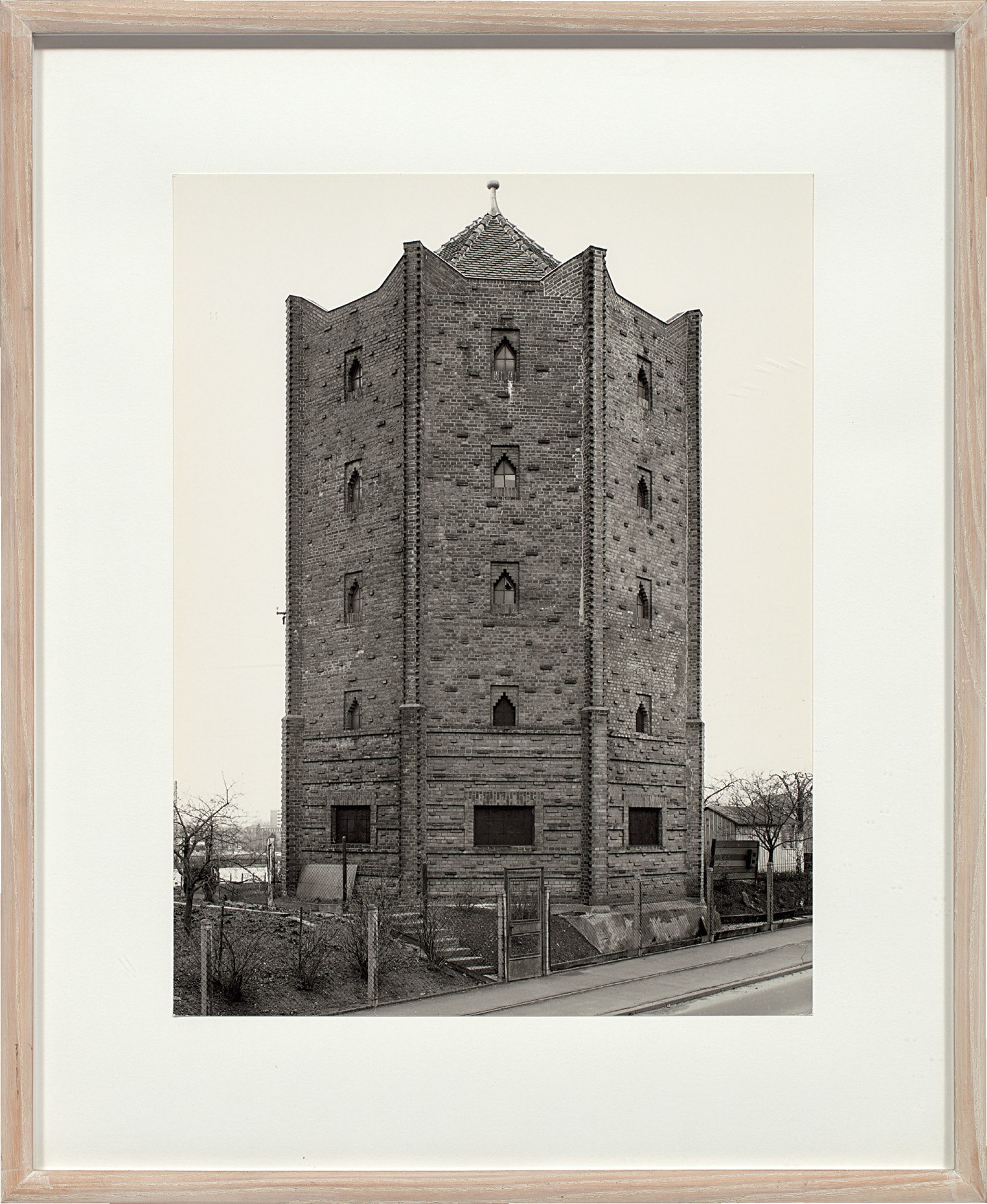
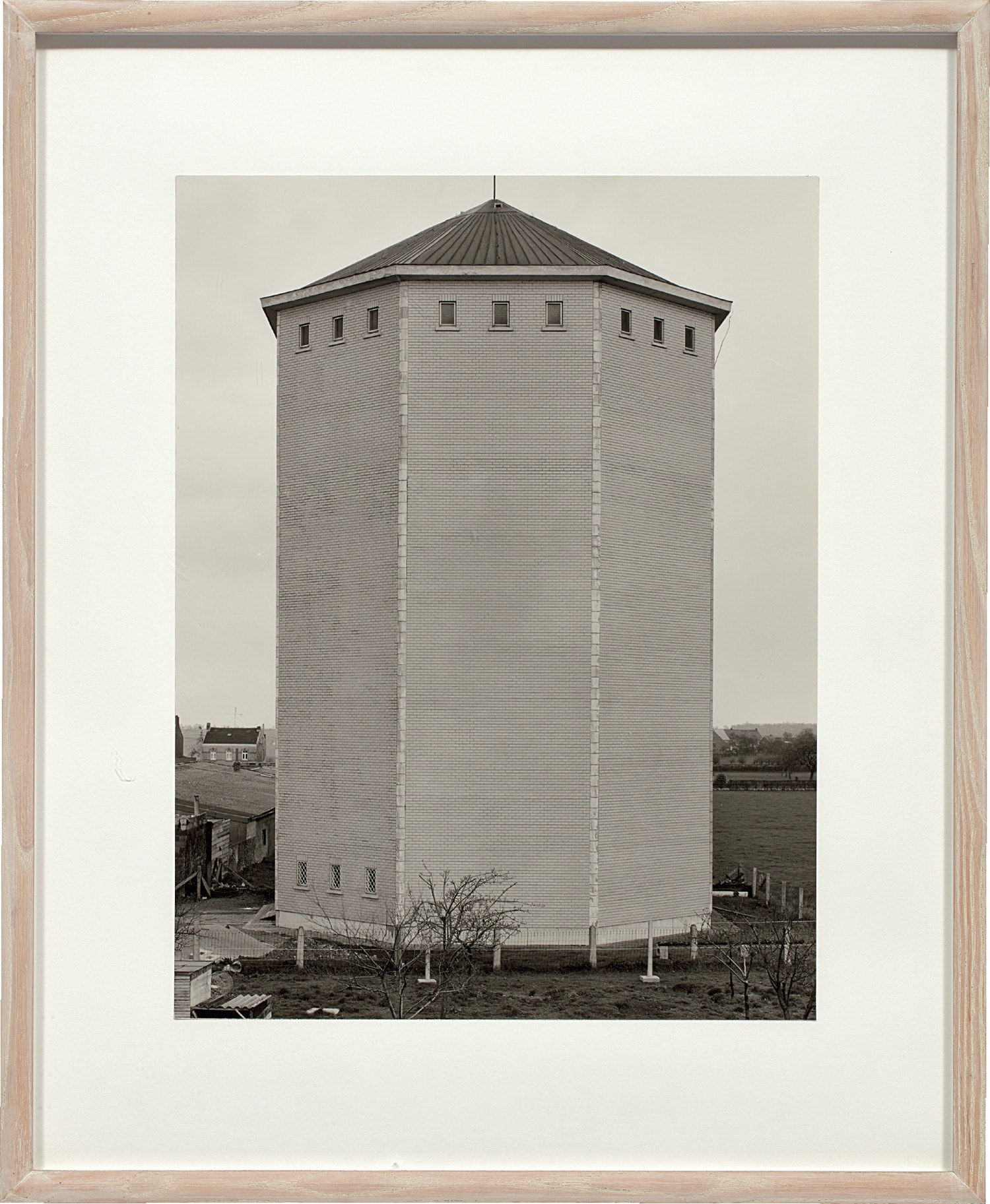

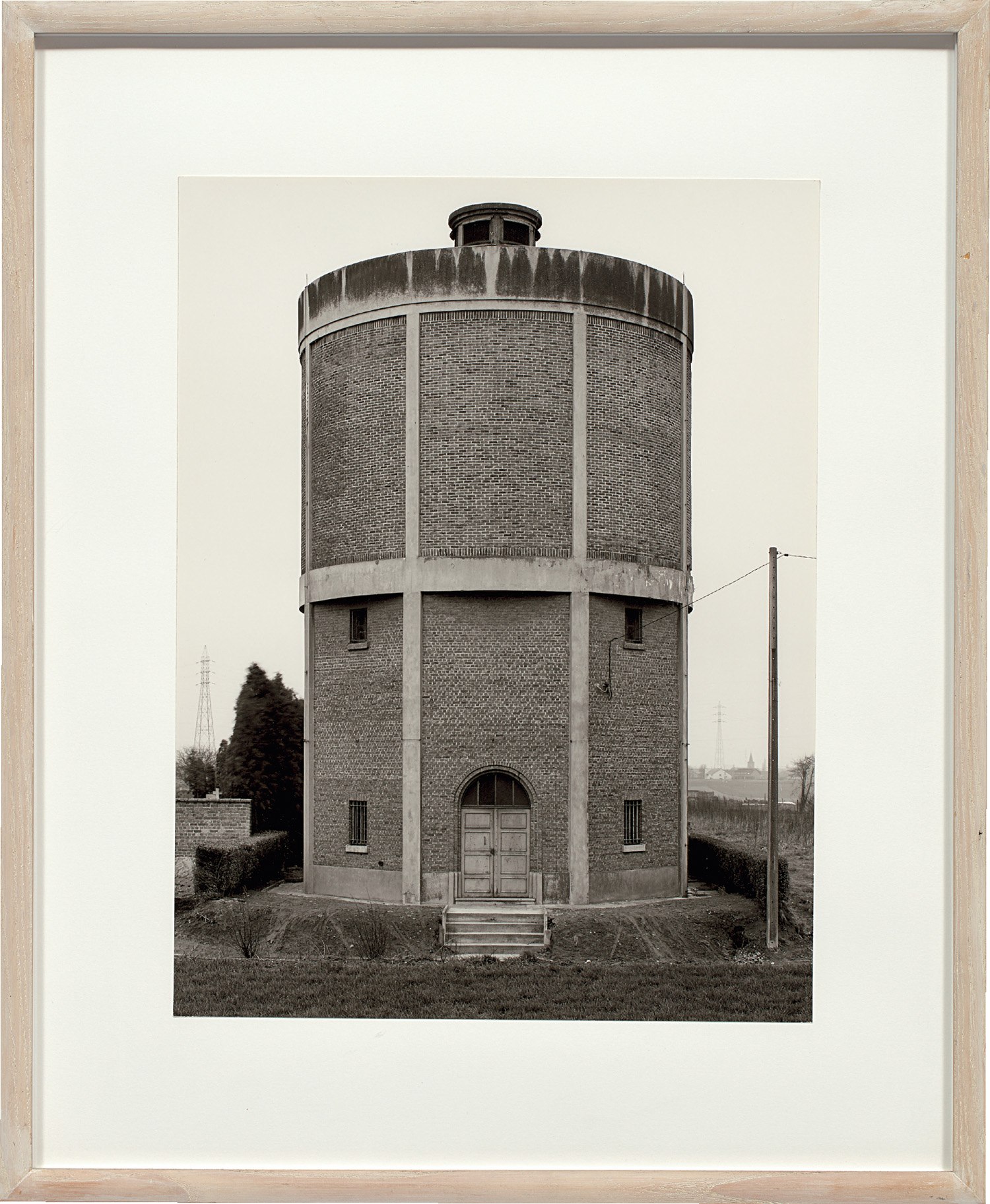























27Ο◆
Bernd and Hilla Becher
Watertowers
(i-xxi) each consecutively numbered [1-21] on the reverse of the mount
each mounted 55 x 45 cm (21 5/8 x 17 3/4 in.)
Full-Cataloguing
‘The Bechers approached photography the way a botanist might approach the cataloguing of flora and fauna.’ Sean O’Hagan, ‘Lost world: Bernd and Hilla Becher's legendary industrial photographs’, The Guardian, 3 September 2014, online.
Bernd and Hilla Becher’s Watertowers have become an icon of both 20th century photography and sculpture, challenging viewers through their totemic directness and cool objectivity. Composed of twenty-one sheets presented in a gridded format, the Bechers’ exploration of the medium is expansive in both size and seriality, often returning to their architectural subjects over a period of years. In the present work, each image is intriguingly austere in palette and embodies a perfected compositional centrality; the Bechers’ rigorous approach offers an unbiased and unfettered portrait of the industrial age, presented in the artists’ specified mode of classification. Subsuming us into their indexical practice, our experience is immediately stripped of unnecessary or subjective influences, proffering us a quiet moment of reflection.
Applying rigid aesthetic parameters to create visual order and simplicity, the Bechers’ black and white photography explores the mechanical, man-made and modern. Organising their images of cooling towers, mine heads, gas tanks and furnaces into typologies, their inquiry into Anonyme Skulpturen, the title of their seminal photobook published in 1970, incorporated the cyclical process of visiting sites over a period of years. The artists would work with personnel to clear the scene and erect rigging or scaffolding to achieve an elevated viewpoint. Stripping a human presence from their compositions, the Bechers also sought to remove any superfluous background details, maintaining uniformity in perspective which oft would assume either a central or three-quarter view, as evident in the present work. The photographers would also patiently wait for preferential weather conditions, namely cloud cover, to cast an even distribution of soft light and to block the glare of the sun, removing any hierarchical light and shade to arrest the eye. Through the repetitive blueprint of each capture with their large-format camera, the viewer’s eye is drawn initially to the similarities of each image but subsequently the differing bases, the varied truncated forms and smaller details of each carefully engineered structure. As demonstrated in the expansive twenty-one photographs which comprise Watertowers, the periodic categorisation and classification of the artists’ photography is almost acutely scientific in essence, drawing comparisons to the photography of Albert Renger-Patzsch’s machine studies, August Sander’s portraits of fellow Germans and Karl Blossfeldt’s compelling sculptural images of flora. In the present work’s format, we are afforded a small and intriguing snapshot into the Bechers’ exhaustive documentation of their subject matter, presented with their seminal motif of the water tower, a body of images built over a period of twenty-five years.
The Bechers also found inspiration in the landscape of the United States and unified their practice by photographing water towers on both sides of the Atlantic. Celebrated by international Minimalist and Conceptual artists for their sequential ordering and presentation of elements within a larger composition, their pioneering body of work was championed by Carl Andre in his November 1972 essay in Artforum, the same year as the couple’s first exhibition at Sonnabend Gallery in New York. As Andre states, 'The photographs of the Bechers record the transient existence of purely functional structures and reveal the degree to which form is determined by the invariant requirements of function' (Carl Andre, 'A Note on Bernhard and Hilla Becher', Artforum, November 1972). Travelling throughout Europe and America to photograph specific sites or buildings, Bernd and Hilla Becher’s photographs create a tense dichotomy, evident in Watertowers. Both specific and detailed, the use of photography as a medium ascribes each image a distinct place and time, yet the altogether presentation of twenty-one separate experiences creates a more complete and overall view of myriad structures. It is this slippage which makes them particularly unique as stated by Weston J. Naef: ‘There is a timeless quality that can only be realised when the aspect of time is actually foremost in the photographer’s minds. Time is perfectly under control in the Bechers’ art’ (Weston J. Naef, ‘The Art of Bernd and Hilla Becher’, Water Towers, p. 11). Evocative of a previous industrial age, Bernd Becher grew up in the Siegerland, the centre of Germany’s former iron industry, and, after marrying, Bernd and Hilla lived near the Ruhr Valley with its monumental steel plants. Throughout the region of North Rhine-Westphalia many of these former industrial bastions had been built in the 19th century into the 20th, and were already falling into disuse and decay. Visually evidencing the development of industry across Europe and America and the inevitable passing of time, the structures serve as a reminder of human achievement and resourcefulness. Furthermore, the Ruhr Valley architecture would also come to evoke a time prior to war, particularly in the post-Nazi era where progressive artistic and photographic forms were deemed Entartete Kunst, such as the photography of Neue Sachlichkeit and August Sander.
Eliminating uncertainty from their compositions, the Bechers hone into their subject in the present work. Exploring the relationship between humans and nature, the artists highlight the resourcefulness of mankind to store a vital life source through a mastery of engineering; the Bechers’ work celebrates aspects of humanity while concurrently highlighting a shift into a new epoch. Exquisitely detailed and sharp in focus, the present work is monumental in size, conveying a subtle nostalgia for human achievement.
Bernd and Hilla Becher
GermanHusband and wife Bernd and Hilla Becher began photographing buildings and relics of the Industrial Revolution, such as coal mines and cooling towers, in 1959. Like objective scientists removing a specimen from the field, the Bechers framed their subject in a manner that isolated it from its environment. Often, these stark, beautifully detailed prints were then displayed in grid-like structures, forming stunning 'Typologies'.
By the time Bernd Becher became a professor at the Düsseldorf Art Academy in 1976 (policy would not allow Hilla to be a simultaneous appointment), the Bechers' photographs, with their seemingly neutral point of view and serial display, were already being applauded by the international art world as important works of Minimal and Conceptual Art.